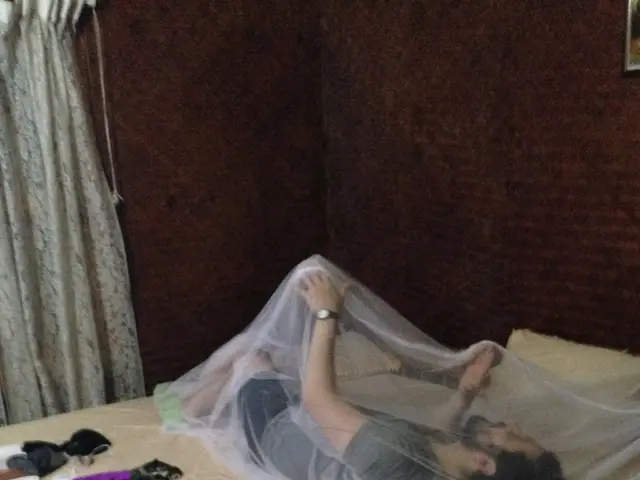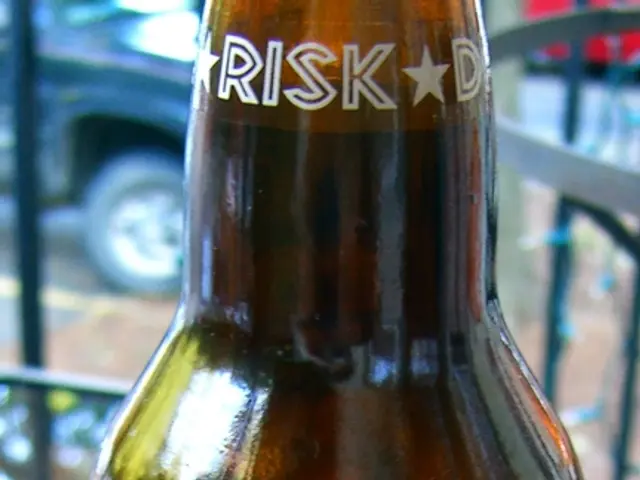Country nearing resurgence of widespread measles outbreak
Warning: Contains content discussing sensitive topics, including vaccination, healthcare, and potential future events. Reader discretion is advised.
🚨 U.S. Braced for Measles Resurgence 🚨
Find yourself scratching that rash and wondering, "How'd I catch this?" You're not alone. The United States might be on the brink of welcoming back endemic measles after a 25-year hiatus.
With present childhood vaccination rates, predictions suggest measles could resurface in widespread, persistent cycles, up to an astounding 851,300 cases within the next quarter-century, according to recent research.
What's more eye-catching, this figure soars to an estimating 11.1 million cases if vaccination rates were to slide by mere 10%. The alarming numbers have researchers shouting from the rooftops for a change in strategy.
You may be thinking, "Wait, didn't we eradicate measles back in 2000?" Well, that's correct, but with vaccination rates dropping for the measles-mumps-rubella (MMR) shot and other childhood vaccines, outbreaks of preventable infectious diseases are increasingly becoming a reality. In this year alone, there have been over 800 recorded measles cases in the U.S., along with 10 separate outbreaks.
In case you missed the latest stats, reported cases through mid-April 2025 marked a staggering 180% increase over the total number of cases witnessed in all of 2024. The majority of these cases are occurring within close-knit communities with below-average vaccination rates.
State and national policy discussions are swirling that could further undermine childhood vaccination. As the most recent research reveals, decline in vaccination among American children has been swiftly escalating since the COVID-19 pandemic, fueled largely by discredited theories that vaccines spark autism and other health risks.
And it's not just measles. Should vaccination rates plummet, experts predict a full-fledged resurgence of other diseases like Rubella and Polio.
To avoid a grim future, we need to buckle up for a boost in vaccination rates, intensify education about vaccines, and bolster our public health infrastructure. With the proper measures, we can keep measles from taking root in our communities once more.
So, get vaccinated, stay informed, and let's kick measles back out the door, where it belongs. After all, didn't we already say goodbye 25 years ago? 👋
🔍 In Depth: Factors Driving the Potential Return of Endemic Measles in the U.S.
- Decreasing Vaccination Rates: Sliding vaccination rates, particularly post COVID-19, compromise herd immunity, making communities susceptible to outbreaks.
- Skepticism About Vaccines: Increased mistrust of vaccines contributes to more people rejecting vaccination, further reducing immunity levels.
- Low Coverage in Specific Communities: Outbreaks often brew in tightly-knit communities where vaccination rates are low.
- Global Travel: Measles cases imported from abroad can spark outbreaks in unvaccinated pockets of our population.
📈 Impact if Vaccination Rates Persistently Decrease
- Heightened Outbreaks: A decrease in vaccination rates would lead to unregulated measles outbreaks, resembling the 2025 cluster in Texas.
- Return of Endemic Status: If the trend continues, measles may reclaim endemic status within two decades.
- Healthcare Overburden: An endemic state would strain healthcare facilities, increasing hospitalizations and fatalities.
- Resurgence of Other Diseases: Lower immune levels could also precipitate the comeback of other diseases like Rubella and Polio.
Sources: [1] Centers for Disease Control and Prevention, [2] Columbia University's Mailman School of Public Health, [3] Stanford Medical School, [4] Journal of the American Medical Association (JAMA) [5] Vaccine Confidence Project
The impact of decreasing vaccination rates on health-and-wellness cannot be overstated, as it threatens not only our immediate communities but also the medical-conditions and chronic-diseases afflicted population.Such a scenario could exacerbate the burden on the respiratory-conditions patients, whose weak immune systems are already susceptible to airborne viruses.In addition, the digestive-health and eye-health of those with autoimmune-disorders could deteriorate due to increased infections.For those with hearing problems, delaying vaccination could leave them vulnerable to severe complications associated with preventable diseases.Moreover, the combination of weakening immune systems due to decreased vaccination rates and climate-change could lead to an increase in skin-conditions.Manufacturing facilities could also be affected, as production losses and employee absenteeism due to illnesses might ensue.This situation unfolding in the workplace-wellness environment could lead to a rise in mental-health issues, as stress and anxiety levels increase among employees.Among mens-health patients, there could be a disproportionate impact on reproductive health and potential complications during pregnancy.For women, decreased vaccination rates could lead to an increase in complications during childbirth and may affect womens-health issues like cervical cancer screenings and pelvic exams.Parenting responsibilities might become increasingly challenging under these circumstances, with the need to navigate and protect children from preventable diseases.Similarly, weight-management efforts could be undermined, as chronic diseases put individuals at higher risk of obesity and related health complications.Controlling cardiovascular-health conditions could also prove difficult under these circumstances, further increasing the likelihood of heart-related complications.The financial implications are vast, too - with healthcare costs skyrocketing due to increased hospitalizations and disease management. The effects on personal-finance, investing, wealth-management, and banking-and-insurance sectors could be considerable.In the broader industry, MedTech, pharmaceuticals, and healthcare industries would have to confront a surge in demand for therapies-and-treatments for various medical-conditions.Medicare and Medicaid spending would likely undergo substantial changes to accommodate these increased costs.CBD-products could gain popularity as an alternative treatment for managing symptoms related to measles and other diseases.Neurological-disorders like Alzheimer's and Parkinson's might witness a rise in cases due to increased exposure to preventable illnesses.Environmental-science can potentially offer insight into understanding the reasons behind decreased vaccination rates and offer solutions for promoting health-and-wellness education.The finance sector would have to address systemic risks posed by these trends, prompting changes in risk management and investment strategies.Energy consumption and production costs could rise due to increased spending on healthcare and treatments.In the space-and-astronomy field, research into the impact of measles resurgence on space travelers might become essential to maintain crew health and safety.Retail outlets and small-businesses may also have to adjust their operations to accommodate the rise in illnesses among their employees and customers.Entrepreneurship could see a shift towards the development of innovative solutions for addressing health-related challenges fast approaching.Transportation infrastructure might face disruptions, with public health authorities implementing travel restrictions or quarantines to curb the spread of diseases.Leadership roles across various sectors would be crucial in navigating these complex issues and promoting evidence-based decision-making.Diversity-and-inclusion initiatives could take on renewed importance, ensuring that all communities - regardless of race, gender, or socioeconomic status - have equal access to vaccination resources and health-and-wellness information.The rise of telehealth and remote services could mitigate some of the challenges posed by these trends, making healthcare more accessible.As the climate continues to change, connections between global travel, environmental factors, and decreased vaccination rates might reveal opportunities for future interventions.With an increasing focus on workplace-wellness, companies could work towards offering onsite vaccination clinics, promoting employee health and reducing the spread of diseases.The importance of maintaining a balanced diet, through nutrition, cannot be overstated in supporting overall health-and-wellness and immune system functioning.*Finally, focusing on aging-related health challenges and adopting lifelong learning strategies related to health-and-wellness could help older adults navigate the complexities of this situation.








